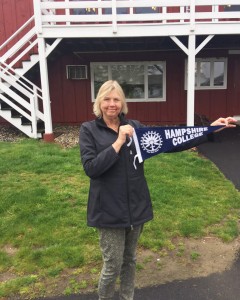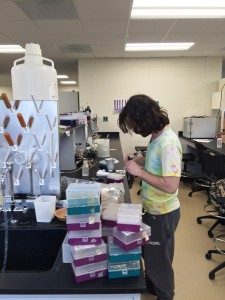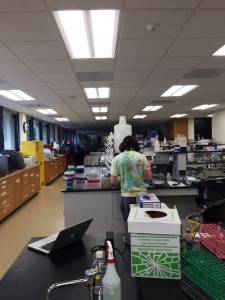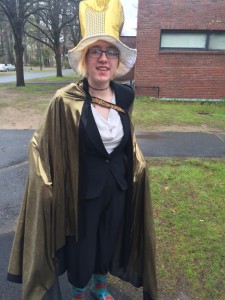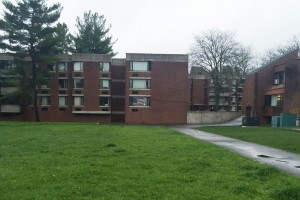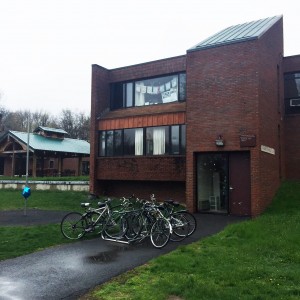About
“Disrupt the status quo.” These are the words of the Hampshire College website. Since deciding not to accept SAT and ACT scores, Hampshire is nowhere to be found on the U.S. News and World Report “Best Colleges” list—and the trailblazing community takes pride in that fact. The researchers who compile the “Best Colleges” list simply don’t know how to deal with the institution’s forward-thinking practices. The college is known for its entrepreneurial student body and alumni, ranking sixth on Forbes list of “Most Entrepreneurial Colleges” in 2015. Led by the dynamic and sometimes controversial Jonathan Lash, an expert on global sustainability, climate change, and development challenges, Hampshire defies categorization.
Location
At first glance, the Hampshire campus appears to be a well-maintained ranch with spread-out buildings and lush green spaces. Located in the Pioneer Valley of western Massachusetts, a scenic 90 miles from Boston, the Town of Amherst (population 35,000) is a hilly, picture-perfect setting for locally-owned shops and specialty dining. The Town Common stretches for several blocks along Boltwood and Pleasant Avenues. During Daffodil Days, over 50,000 daffodil bulbs show their stuff in the Town Common, and talented local artists decorate the sidewalks with daffodil-themed murals. Judie Teraspulsky, owner of Judie’s Restaurant in downtown Amherst, is known for her delightful popover creations, including the Gumbo Popover and Turkey “Pop” Pie. One of the most popular places to stay overnight is The Lord Jeffery Inn, affectionately called “The Jeff.” Facing the Town Common and only a five-minute drive from Hampshire College, the upscale inn uses geothermal heating and water-efficient landscaping.
Academics
Hampshire admitted its first students in 1970 in response to a $6 million donation from Amherst College alumnus Harold F. Johnson. With a matching grant from the Ford Foundation, Hampshire’s trustees purchased 800 acres of orchard and farmland. However, the original idea for Hampshire took root back in 1956, when a committee of presidents from Amherst, Mount Holyoke, and Smith Colleges, and the University of Massachusetts at Amherst, examined the assumptions behind a liberal arts education. Their report, “The New College Plan,” advocated many features that have since been incorporated into the Hampshire experience: an emphasis on curiosity and motivation; multidisciplinary learning; and close mentoring relationships with professors.
Majors (and a traditional grading system) do not exist at Hampshire. Instead, students chart their own “concentrations” through a divisional system: Division I – first year; Division II – second and third years; and Division III – fourth year. Division I is about bridging subjects across five interdisciplinary schools: Cognitive Science; Critical Social Inquiry; Humanities, Arts, and Cultural Studies; Interdisciplinary Arts; and Natural Science. During the Division II years, students identify and explore their concentrations through individually-designed programs consisting of course work, independent work, and internships or field studies. Students work closely with at least two personally-selected faculty members to design a concentration. A concentration may mimic a traditional college major or be a highly-individualized program of study that encompasses several disciplines. A crucial piece of the Division II years is the Community Engagement and Learning requirement (CEL-2); forty hours are required. Division III revolves around an advanced independent study project. According to the Hampshire website, Division III is a student’s “chance to make a change,” whether that involves the launch of a start-up, the construction and programming of a robot, or the creation of a choreographed dance performance. The sky’s the limit.
As a member of the Five College Consortium (Hampshire, Amherst, Smith, Mount Holyoke, and University of Massachusetts at Amherst), Hampshire students have access to 6,000 courses, eleven museums, and a library system with 11 million items. Hampshire academic advisors are highly-knowledgeable about the offerings at all five colleges. In fact, ninety-five percent of Hampshire students take at least six classes at the other schools during their undergraduate years. The Consortium schools operate on the same academic calendar with free bus shuttles. Hampshire students are welcomed with open arms.
Student Life
The Hampshire student body is composed of 1,400 “community leaders and builders” who are “naturally empathetic” and “demand authenticity.” Don’t be surprised if your student tour guide sports dreadlocks and harbors a passion for bicycle maintenance! Interesting student groups range from the Glass Collective to Circus Folks Unite! to Wool People. The Prescott Tavern is a central meeting place with late-night study spaces and recreational activities such as foosball, pool, and board games. The tavern is home to the TavernArt gallery, a fabulous student gallery on campus.
The R.W. Kern Center is a symbol of the Hampshire community’s values and ideas. The first major new building in three decades, it was constructed with the Living Building Challenge in mind: to generate its own electricity, collect its own water, avoid toxic “red list” chemicals, and use materials primarily from local and regional sources. The 17,000-sq-ft center is a major piece of Hampshire’s sustainability initiative to make campus operations carbon neutral, including a plan to go 100 percent solar for campus electricity. The multifunctional building serves as a living laboratory, where students and the public study its systems and performance, tied to measures for sustainability.
Housing and Dining
Hampshire strives to create residential environments that are the most conducive to learning for each individual student. The college also facilitates a process for students to form living communities based on habits, commitment to a substance-free lifestyle, common learning goals, social identities, or medical needs.
Hampshire invites incoming first-year students to participate in specific living and learning communities as a means to find their own niches on campus: Body, Brain, and Culture; Community Engagement for Social Change; Environmental Justice and Sustainability; FARM!; Looking/Reading/Writing; and Wellness. FARM! is an interdisciplinary, co-curricular living learning community focused on food production, environmental justice, and sustainable agriculture. Co-sponsored by the Hampshire College Farm, the community follows food from seed to table. Students learn about organic vegetable production and sustainable animal husbandry through farm work and other on-farm research opportunities. Activities may include a film series, guest speakers, cooking classes with seasonal vegetables, hyper-local meats, and local dairy products, and engagement with the local agricultural community.
Since fall of 2013, Hampshire’s food service provider, Bon Appétit Management Co., has built menus around products harvested on the farm. On campus, the movement is referred to as the “Healthy Food Transition.” The 800-acre campus offers ample room for growth beyond the current 15 acres of vegetables that support a thriving Community Supported Agriculture program. President Lash, an environmentalist concerned with the global capacity to produce food, asks, “How will we feed 9 billion people in a warming world?” Lash spelled out his vision for Hampshire as a transformative institution during his inauguration speech in 2012. Al Gore delivered the keynote speech at that event. Gary Hirshberg, a Hampshire graduate and co-founder of the world’s leading organic yogurt-maker, Stonyfield Farm, offered a sizable gift to support that vision.
Admissions
Hampshire is a proud member of the non-profit organization, Colleges that Change Lives. Without the submission of ACT and SAT scores (they’re not even optional!), each application is reviewed for a growth-oriented mindset, an ability to see connections, and intellectual bravery. The admissions committee focuses on academic records, history of civic engagement, letters of recommendation, and essay responses. Sixty-one percent of Hampshire applicants receive offers of admission. Hampshire’s website facetiously states, “Students must be at least 17 years of age by the time they arrive on Hampshire’s campus for orientation. Any younger students should wait until they would meet this age requirement to apply. The use of aging potions is strictly prohibited.” Hampshire is ranked in the top 1% of all colleges and universities in the nation for the number of graduates who go on to earn a doctorate degree.
Who Would Be Happy Here?
Non-conformists—high school seniors and college transfer students—gravitate to Hampshire. The college appeals to those who want to be entrepreneurs of their own education. Hampshire is one of the most liberal colleges in the U.S. and attracts smart, quirky students who prefer small group poetry discussions over sports or Greek life.



